THE THAMIRABARANI LANDSCAPE | MNS TRIP REPORT | 17th APRIL to 20th APRIL 2023 | By Gayathri R
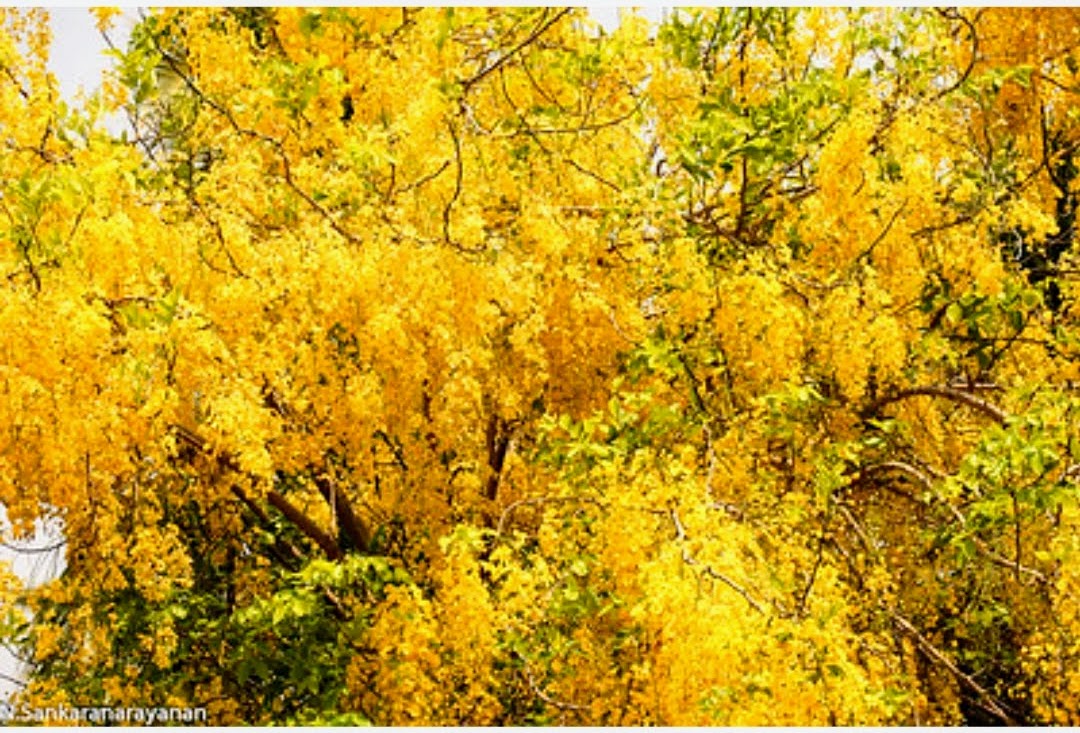
The perennial Thamirabarani has significant environmental and cultural importance to southern Tamil Nadu. It is born in Agasthyamalai, also called the Podhigai Hills and is 130 km long. Our aim was to explore Ainthinai in the Thamirabarani region which denotes the five geographical landscapes– Kurinji(mountainous regions), Mullai(forests), Marudam(cropland), Paalai(desert) and Neithal(seashore).
As I was keen on exploring the Tan Porunai (Sangam name for the Thamirabarani) landscape, I quickly hopped on to the trip with MNS. We were a set of 21 people and the journey started on 16th April 2023 with the night train from Chennai to Tirunelveli.
Day 1: 17 April 2023–
At 6:30, on the morning of 17th April 2023, a couple of us joined the group at the Tirunelveli junction. My eagerness transformed into a feeling of warmth once I met with the bubbling group of people. As a first stop, we went to catch a glimpse of the mighty Thamirabarani, as suggested by Ajith, a young lad who was our driver and a support for the trip.
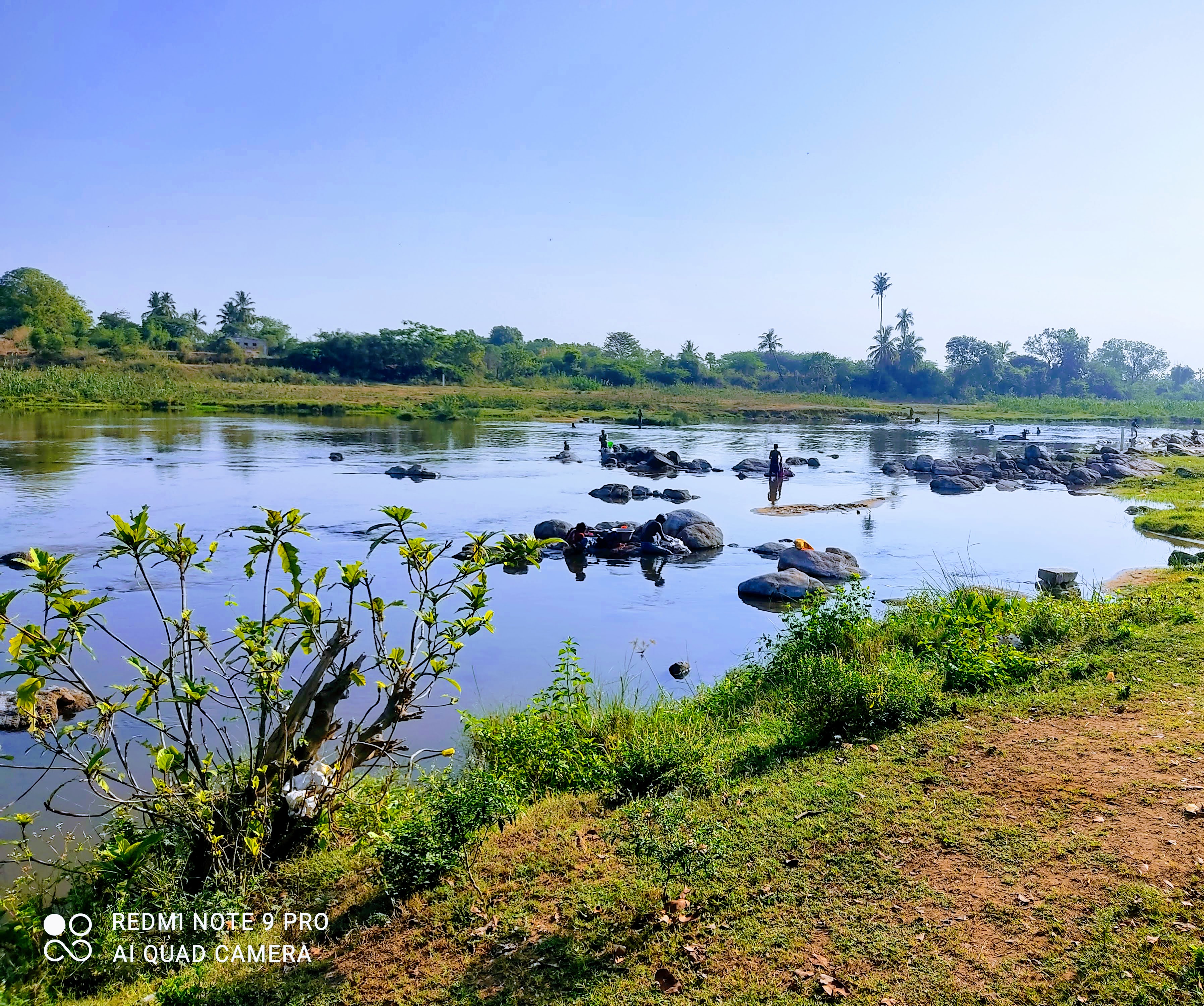
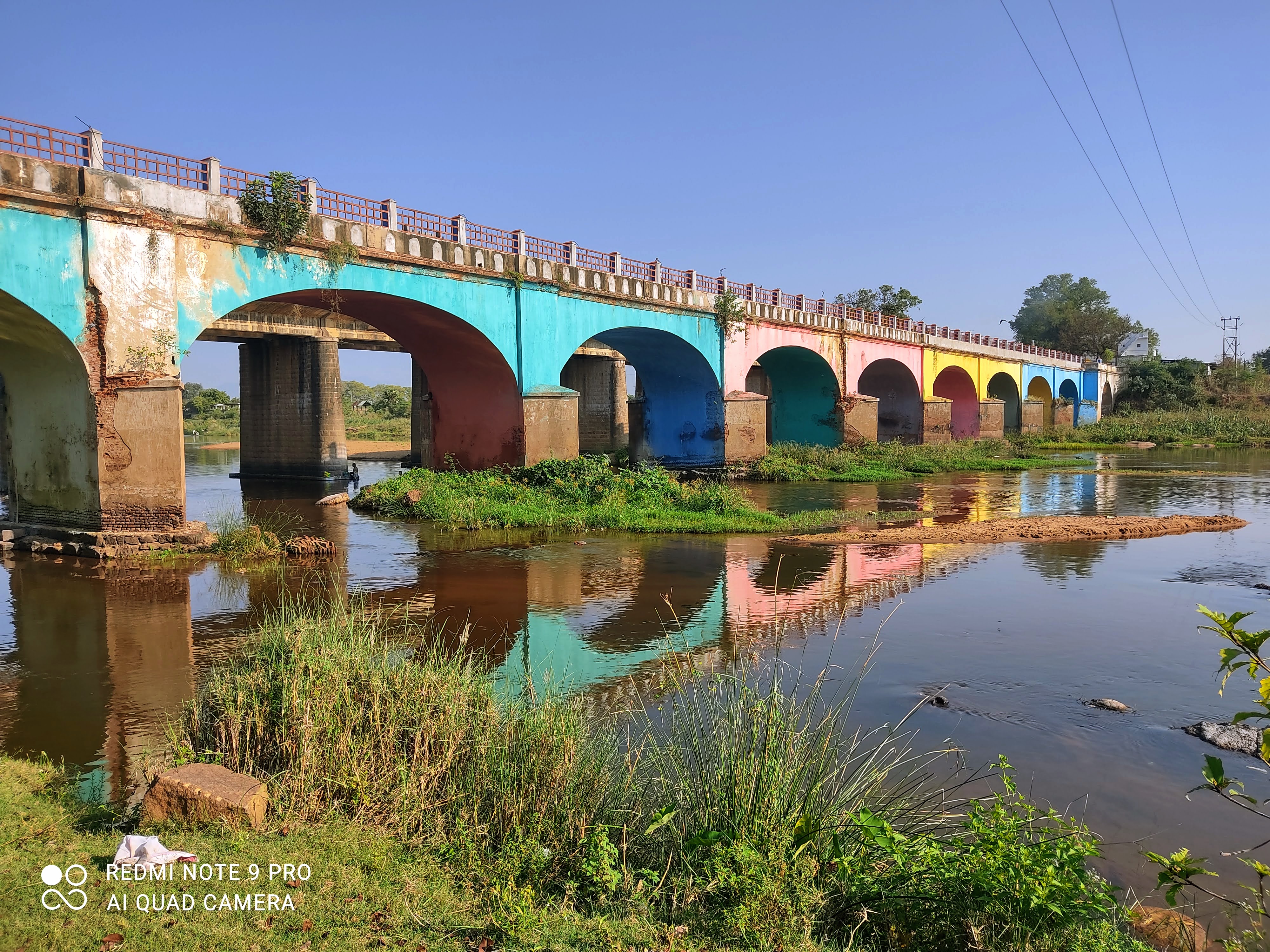
The stop was brief and we soon left for our place of stay, ATREE's Agasthyamalai Community based Conservation Centre. The Agasthyamalai landscape was rustic, dotted with palm trees and the comfortable dorm type rooms made our stay lively. We had a wholesome breakfast and interacted with the research team at ATREE (Mr. Mathivannan, Mr. Thanikaivel and Mr. Isakki). As planned, we went to bath in the stream nearby(a part of the Manimutharu river) in Zamin Singampatti. It was my first river bathing experience and I had a splendid time. The surrounding villages depend on the Porunai and it’s various streams for their daily life. The sight here held a peaceful village life in it’s entirety. After the refreshing bath, we birded in the surrounding patches and ponds. We were also able to spot the Red-naped Ibis and Black-headed Ibis. We observed the Copper-smith Barbet making a perfect hole on the branch of a tree near the river. Probably it was trying to make a spacious home.
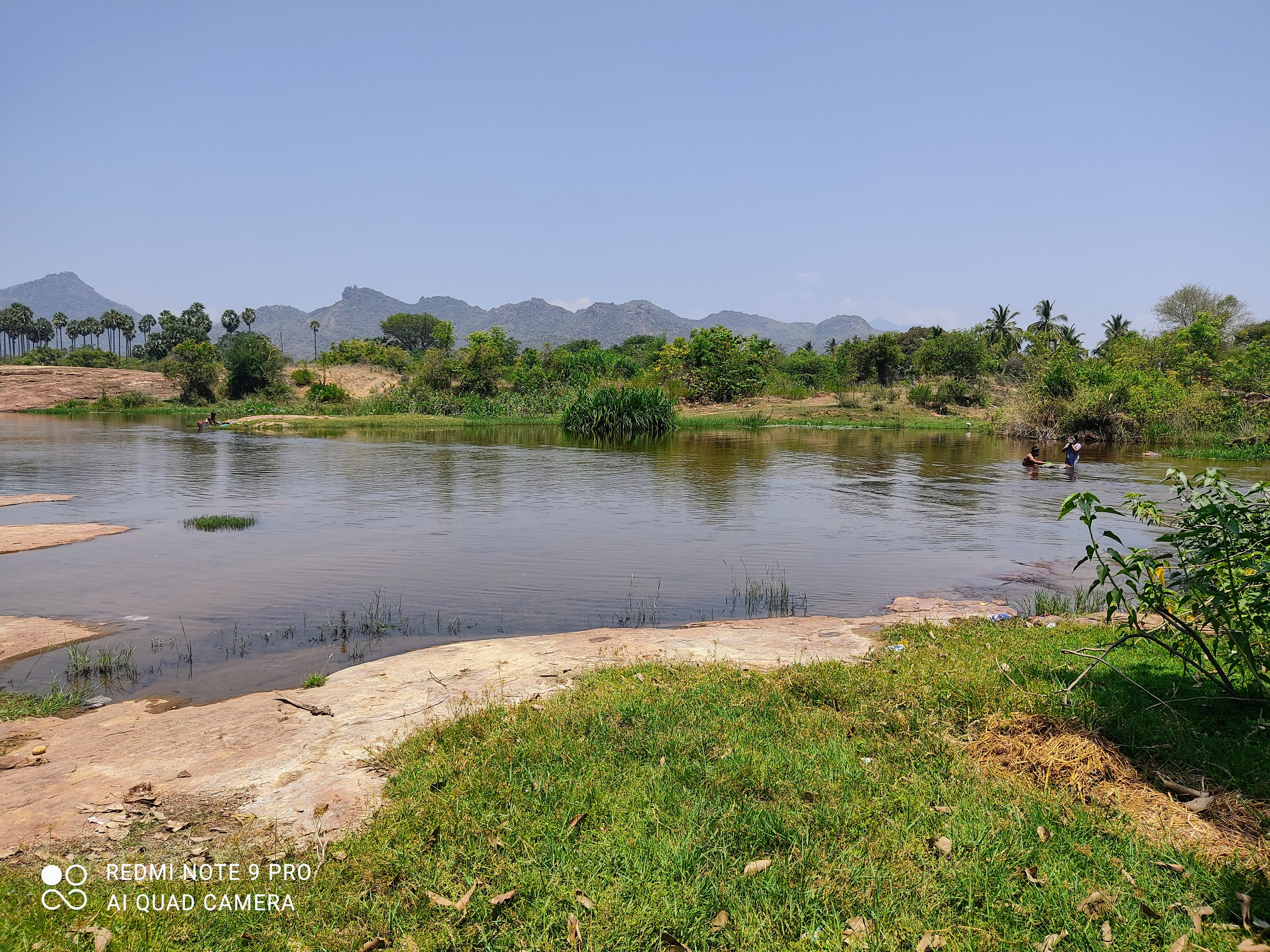
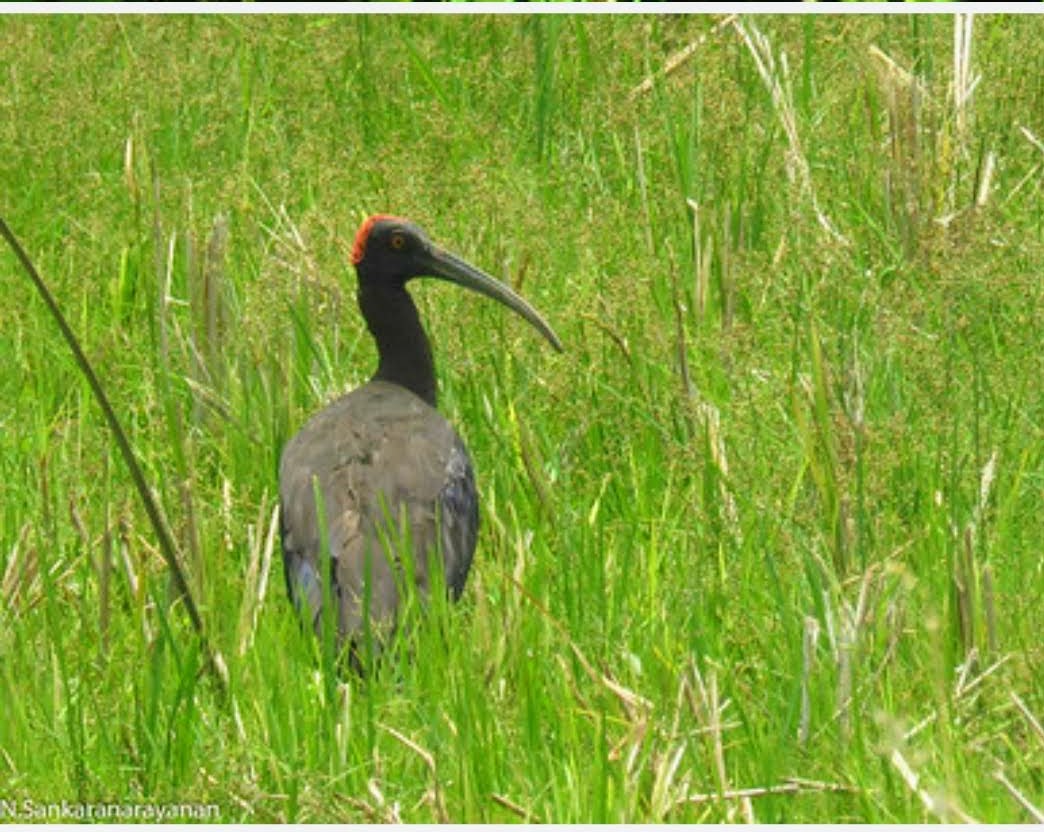
After lunch, we went to the Tirupudaimarathur temple and bird conservation centre. The picturesque village is located adjacent to the Tamiraparani river. The Conservation Reserve is an IUCN Category V protected bird nesting area in the 2.84 hectares (7.0 acres) compound of Siva temple in the village. It was fascinating to learn that the village community manage this area consisting of the temple, the river and it’s sand bank, and the conservation centre. This is the only village along Thamirabarani where commercial sand mining from the riverbed is banned. Justice Ratnavel Pandian, former Chief Justice of Madras High Court, who hails from this village, has been the master behind all these postive efforts.
It seems over 400 little egrets, pond heron and near threatened painted stork nest in this grove of 20 huge, century-old Maruthu, Mahwa, Neem and Iluppai trees and feed in the many agricultural felds, a few ponds and the Tamiraparani River adjacent to it. However, since the rainfall was low in recent times the birds haven’t started nesting yet. Other birds seen were Pied Kingfsher, Spotted Owlet, Rosy Starling, Pale-billed Flowerpecker, Short-toed Snake Eagle and Yellow-throated Sparrow. We also saw hundreds of Indian fying foxes on the giant iluppai trees near the pond and we sighted the leaf nosed bats inside the temple.
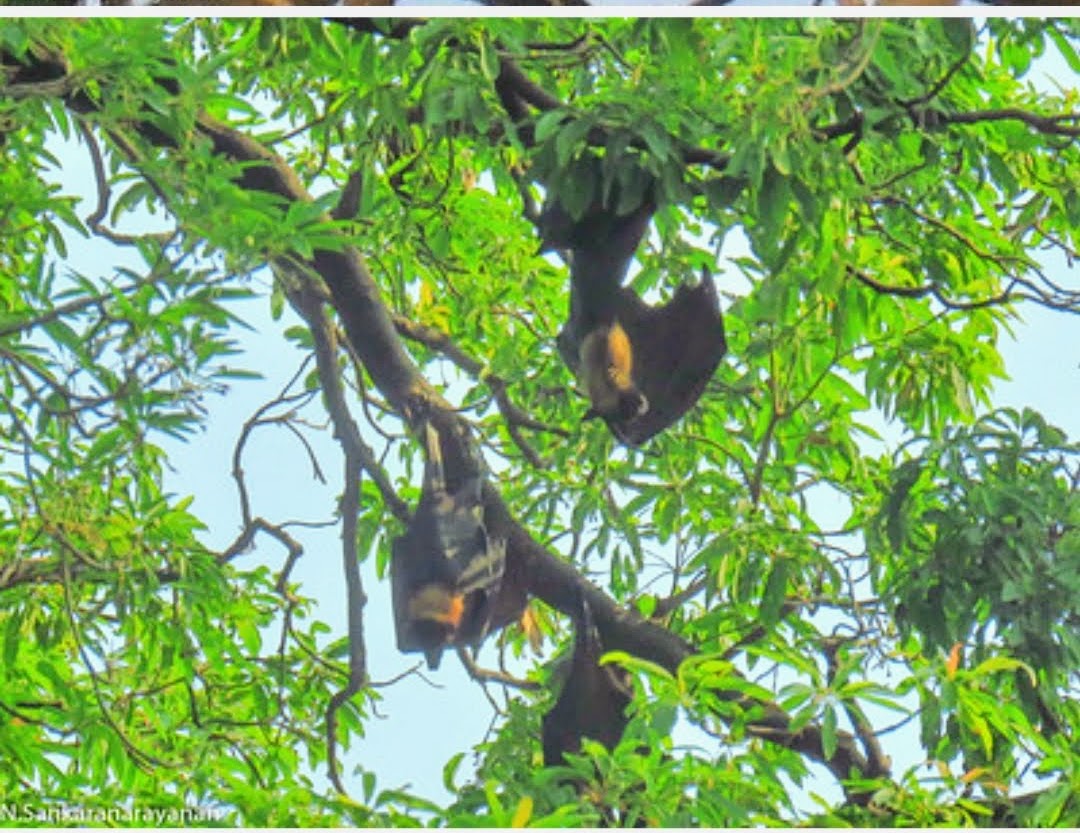

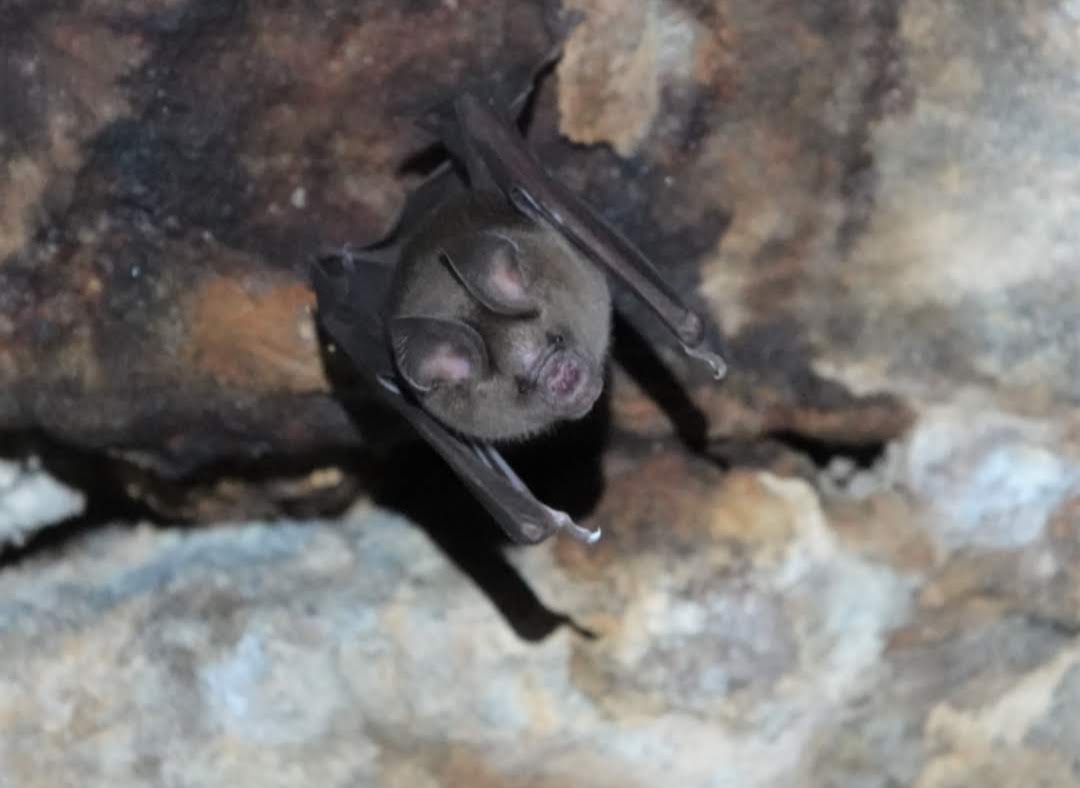
We spent some time on the banks of the river which was nothing short of a beach. We enjoyed the time with a wonderful sunset to complement. We came back to our stay around 7 or so. The mothing screen was kept ready by moth researcher Thalavaipandi Subbaiah of Ashoka Trust for Research in Ecology and the Environment (ATREE) for regular study. He and his colleague are the frst in the world to photograph the moth species Mimeusemia ceylonica, as only an illustration of the insect existed previously. For reference- Moth Found In Tirunelveli, Thoothukudi Districts After 127 Years It was so fascinating to know about this feld of research and few boys stayed up late to learn from the expert.
Even though the temperature was soaring, all of our minds longed to experience more of this place.
Day 2: 18 April 2023–
After a good night’s sleep, we started our day early at 5:15 AM. We had Mr. Thanikaivel and Mr. Isakki to guide us along. We were split into groups in 5 cars and set of to Maanjolai, which is around 1162 metres above sea level. Manimuthar waterfalls offers a beautiful view in the start while climbing the hill.
With the goal of finding the Varai Aadu or the Nilgiri Tahr, we stopped at a place where we could see steep clif faces. Few were lucky enough to spot some movement of the tahr. Then we halted at another place consisting of the unique wood Savannah forests, which falls under the Kurinji region. Mr. Thanikaivel explained us the different landscapes and how temperature and vegetation changes with the elevation. It seems this region has more than 50 endemic species. We were able to spot Red Spurfowl, Painted Spurfowl and Grey Junglefowl on the roads. Also we noticed Lemongrass planted along the roadside. Maanjolai is a small peaceful village with rolling tea plantations which was a sight to behold. We had tea and rusk in a local shop. Here we spent some time birding in the nearby tea farm. On the way, we saw the Draco/ Flying Lizard on a tree. It seems it glides through trees using their wing-like, patagial membranes supported by elongated thoracic ribs to generate lift forces. We also stopped to see the enigmatic Nilgiri Langurs on a far away tree. Few of us were lucky enough to spot them right out of our car windows on the way back.Our next stop was a place named Kakachi which was a golf ground during the British time. The grassland was surrounded by Eucalyptus trees. We were instantly struck by it’s tranquil beauty. There was a waterbody which hosted a variety of butterffies and odonates. We sighted the Crested-serpent Eagle soaring in the sky.
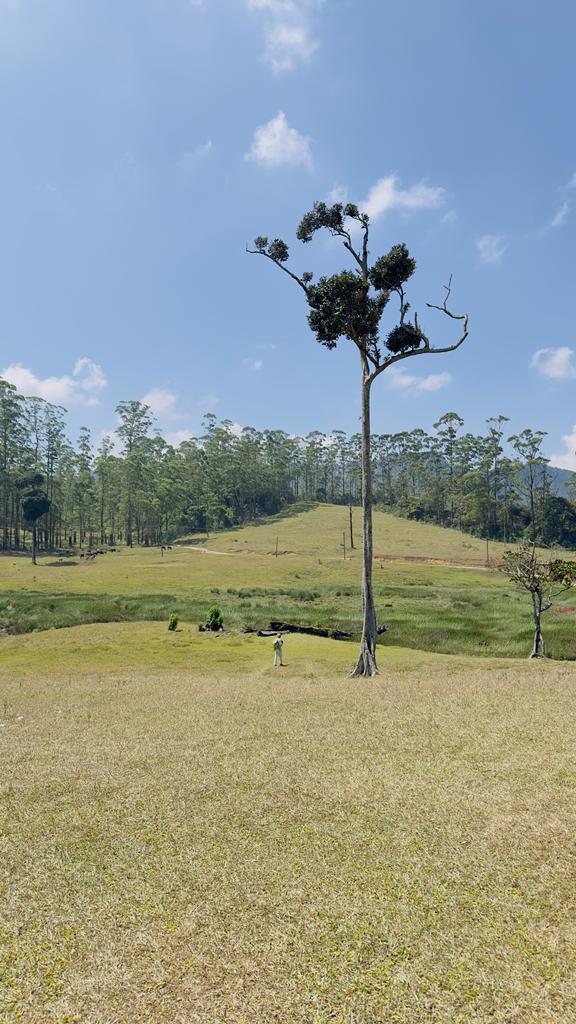
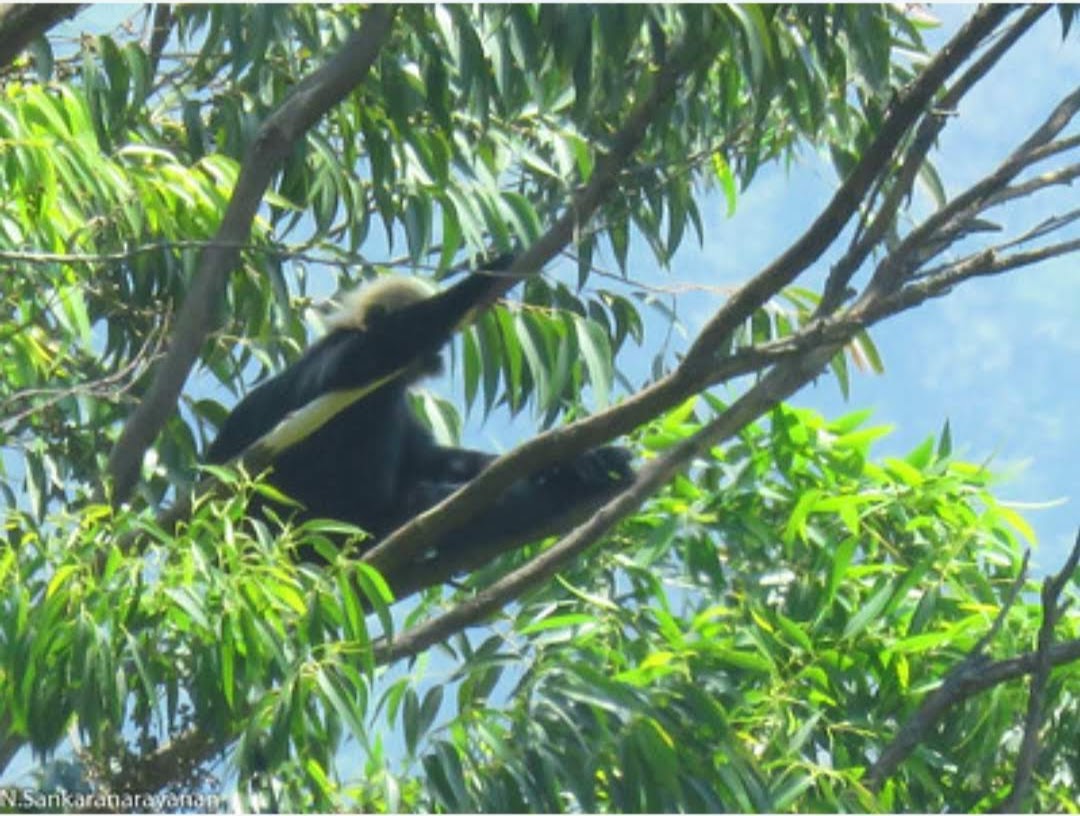
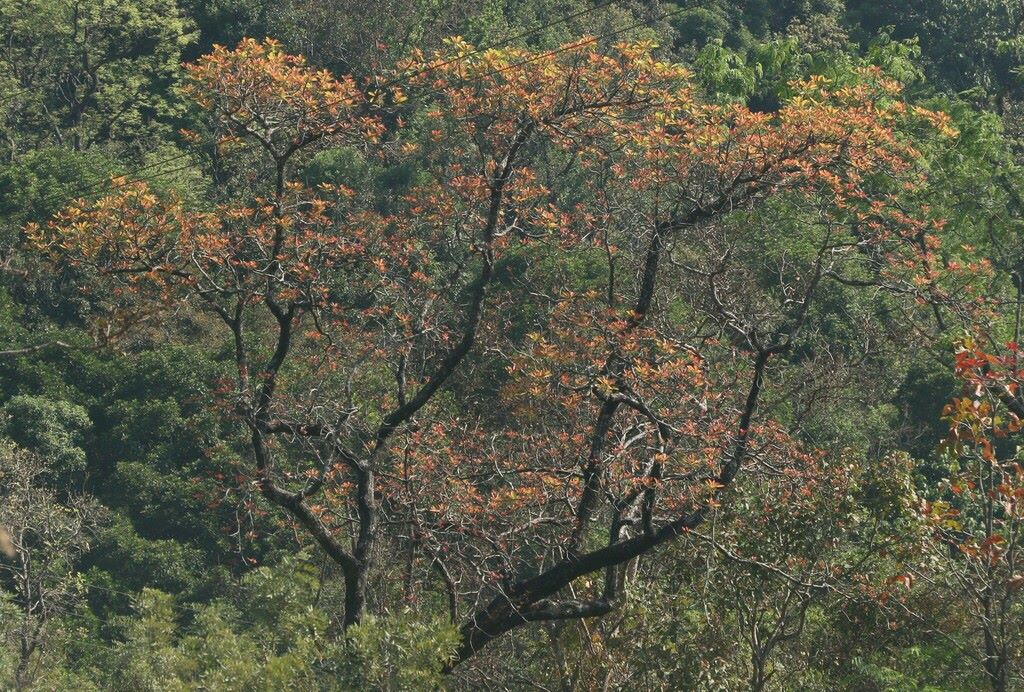
We crossed Nalumukh and were on the way to Kuthuraivetti. All these villages had a post-office, ration shop and houses of people working in the tea estates. But at Oothu, we were told some higher authority is coming and we weren’t allowed beyond. So we raced back to Kakachi and had our lip-smacking packed lunch of Puliyotharai(tamarind rice), Til seeds thogaiyal and boiled eggs.
We spent good amount of time exploring this place. We spotted the Square-tailed bulbul, Long-tailed Southern Treepie/ White Bellied Treepie, the Racket-tailed Drongo making all sorts of mimics. We stopped back at the bakery in Maanjolai to collect the tasty rusks ordered. We heard beautiful call of the Iora, spotted wild boars and marveled at the peacock dance which seemed like it had put up a special show for us. Other species spotted were the Malabar Giant Squirrel, Black Eagle, Great Hornbill, Indian Paradise Flycatcher, Dark-fronted Babbler and Indian Blackbird. People in one of the cars have also seen a monitor lizard crossing the road. The roads were bumpy but we had good chit-chat and fruitful discussions in the car. We hanged around at the Manimuthar waterfalls while coming back, and had a good time touring the inside and outside of the Manimuthar dam. A day well spent, we had our dinner and went to sleep, waiting for another wonderful day.
Day 3: 19 April 2023–
We started at around 6:45 in the morning. The day was bright and our first place was the Vallanadu Black Buck Sanctuary in the Tirunelveli-Thoothukudi highway, a protected area created for the
protection of blackbuck antelope. We spotted 7 or 8 fawns from the watchtower and scaled the perimeter of the sanctuary. We were shown the waterhole where the blackbucks come to drink water. The sanctuary is a dry deciduous forest and the flora includes thorny hardwood and xerophytes: Dalbergia horrida, Dichrostachys cinerea, Vachellia horrida, Acacia planifrons, Albizia amara, Zizyphus. The place also hosts spotted deer, jungle cat, mongoose, black naped hare, scaly anteater(pangolin), vipers and rat snakes and nearly 100 other species of birds are found in the area.
We had breakfast in the forest office and then went to Theri Kaadu, the red desert. In the dry landscape of the mineral-rich Theri Kaadu, one can find the Fan Throated Lizard. Many Cashew trees(Anacardium occidentale) were found and the ripe fruits offered us a scrumptious treat. We made our way to the Arunjunai Katha Ayyanar Thirukkovil which comprises of sacred groves, century old trees, ponds with lots of water birds. We spotted the Knob-billed Duck, Cotton-pygmy Goose, Glossy Ibis.
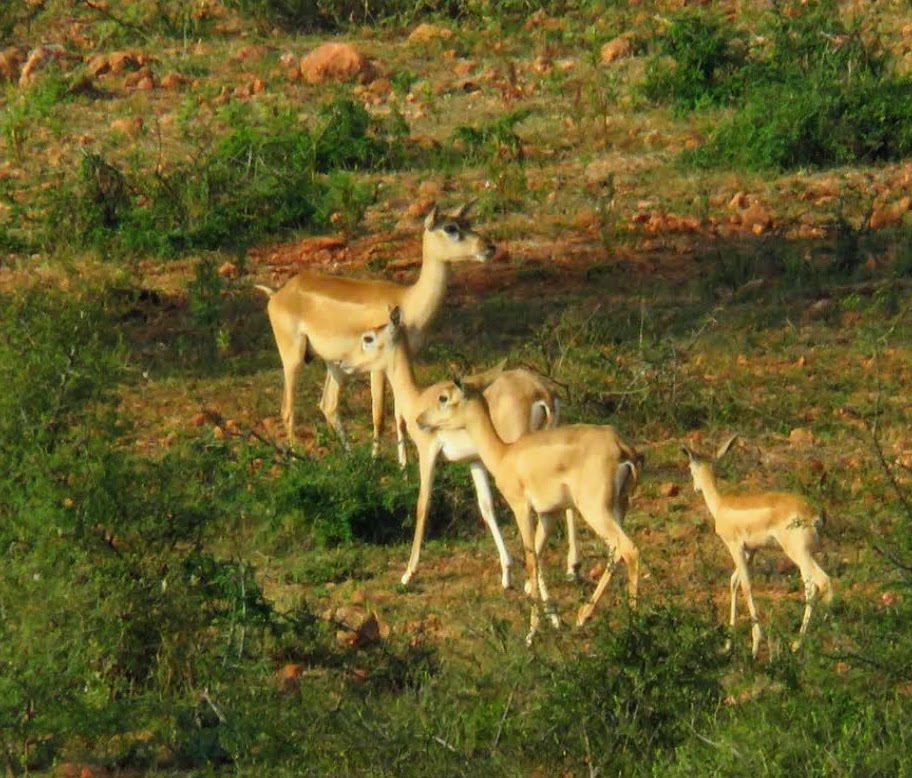
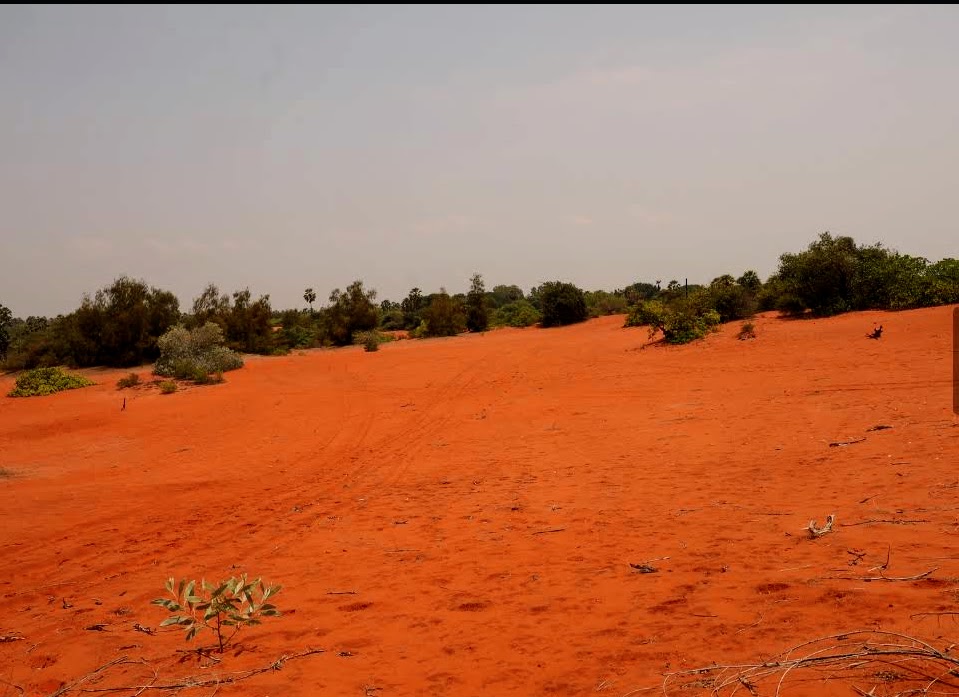
At around 3 PM we reached Punnakayal, a small fishing town. This is the place where the river Thamirabarani meets the sea. We were shown the day’s catch along with starfishes, rays, crabs, octopuses and jellyfish. We sighted Brown-headed Gull, Black-headed Gull and many Brahminy Kites. We hired a boat and traversed the sea, estuary and the mangroves. There are four species of mangroves belonging to 3 genera namely Avicennia marina, A. of-ficinalis, Rhizophora mucronata and Acanthus illicifolius.
We were taken to a small island patch where we walked around and found beautiful shells of sea-urchins, colorful shells and flora unique to the ecosystem. We tasted a small leaved plant which the fisher-folks said would be a bit salty. One other interesting behaviour we observed was of a Brahminy Kite. It was hovering above us eating the fish it held in its claws. We could see it in close quarters and clicked some good pictures. Other birds spotted on this day was White-eyed Buzzard, Ashy-crowned Sparrow Lark, Great Thickknee, Whimbrel, Western Marsh Harrier and Western Reef Egret.
The journey back was long and we reached our stay at 9 PM. We had dinner and some of us went for a night walk with Mr. Thanikaivel, escorted by Gingee, the pet dog there. We saw 3 vine snakes, scorpions with it’s young ones, a small white-breasted waterhen sitting on a tree and a Indian Black Turtle along the waterbody.
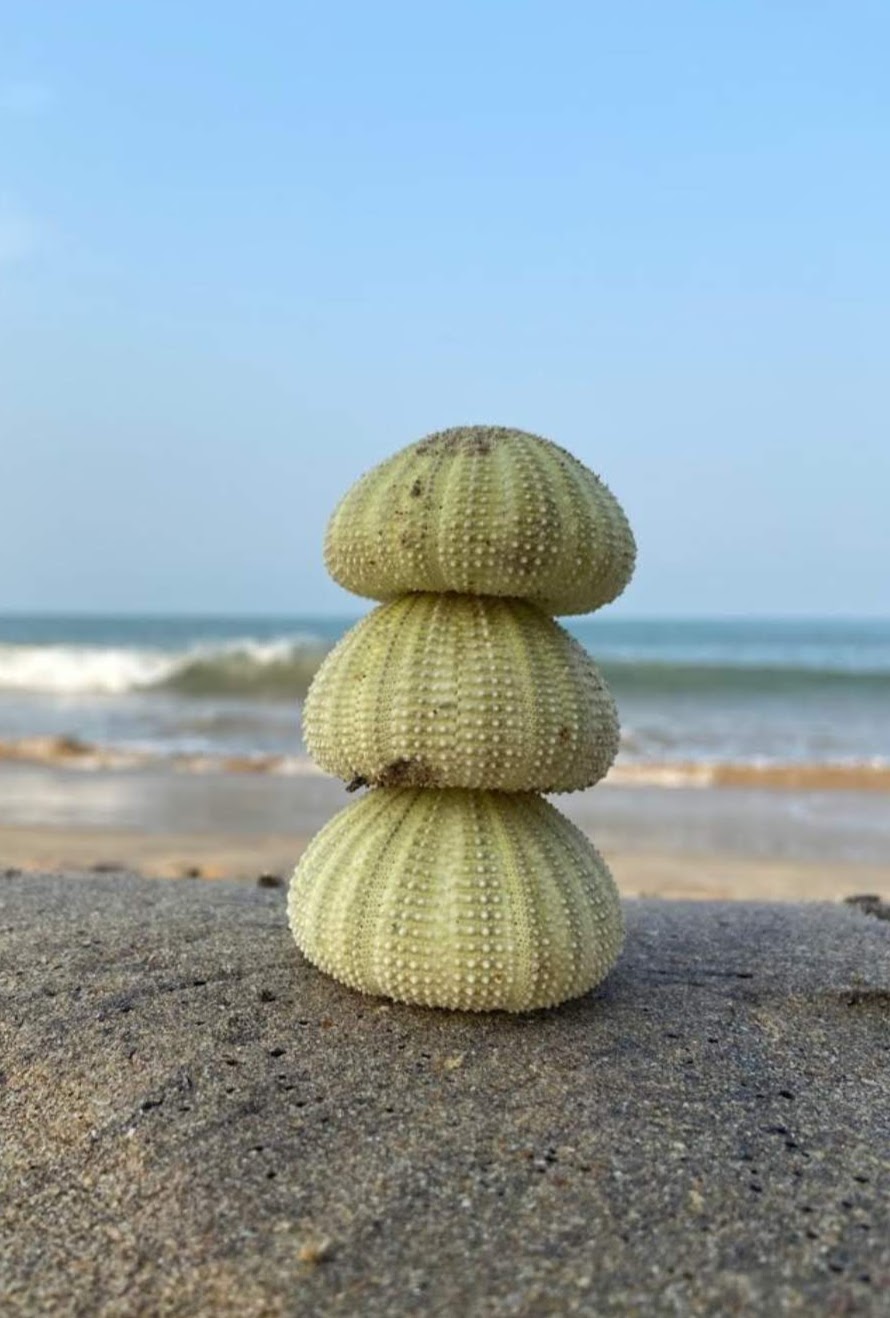
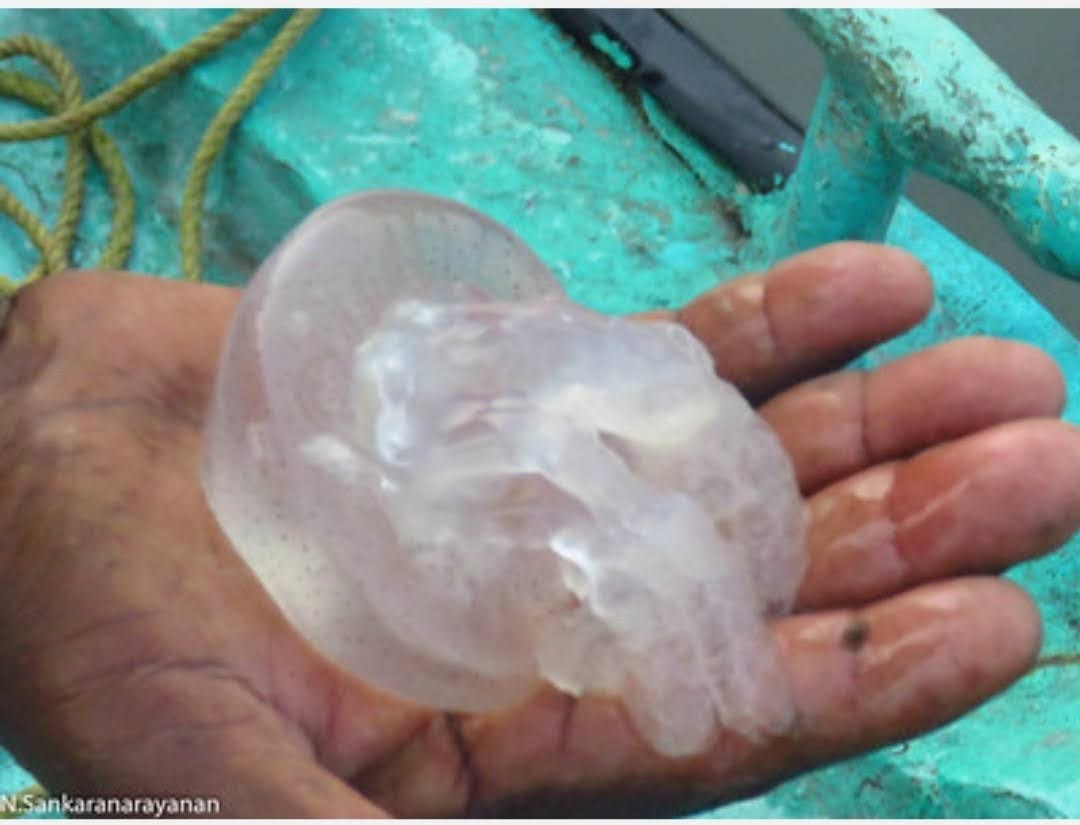
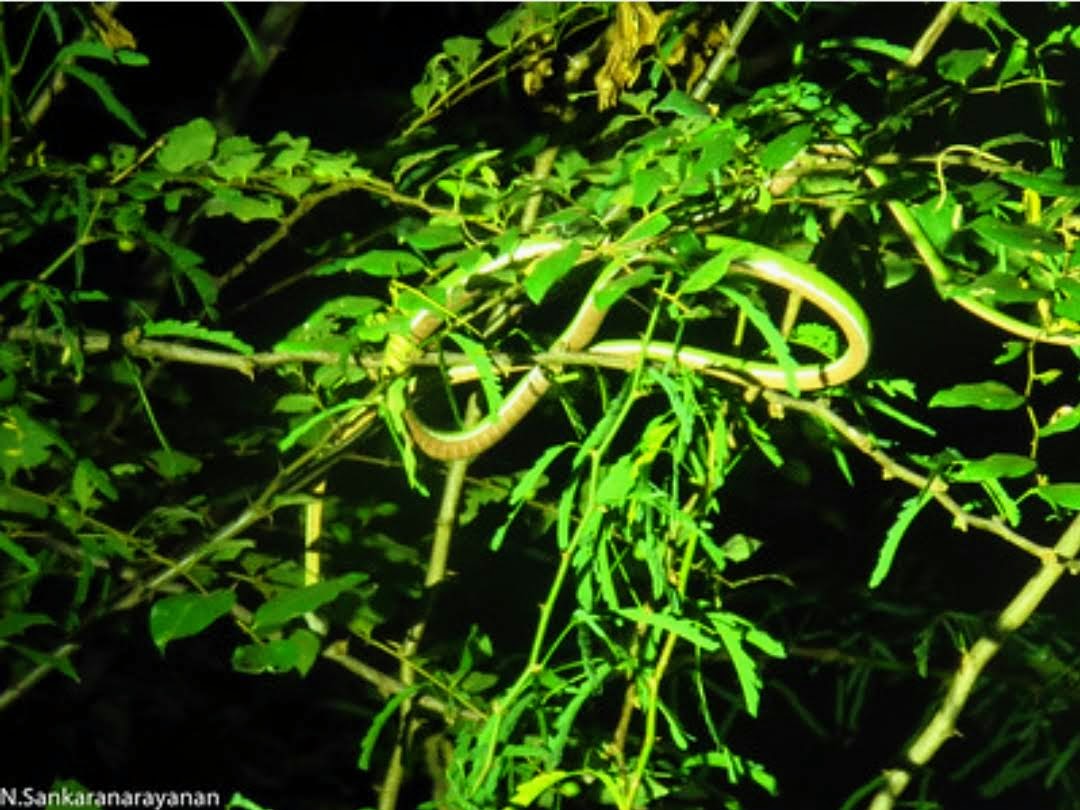
Day 4: 20 April 2023–
We started by having fresh Padhaneer(the nutritional and naturally occurring liquid in palm trees). Then we wandered in the forested landscape around the Sorimuthu Iyyanar Kovil in the Mundanthurai range. Then we had breakfast under giant banyan trees on our return.
The boys played around, climbed the trees and we all had a good time. We went to the stream again, and many had bath while some of us were birding around. The birds sighted today were Blue-faced Malkoha(in the campus), Brahminy Kite, Golden-fronted Leafbird, Loten’s Sunbird and Greenish Warbler.
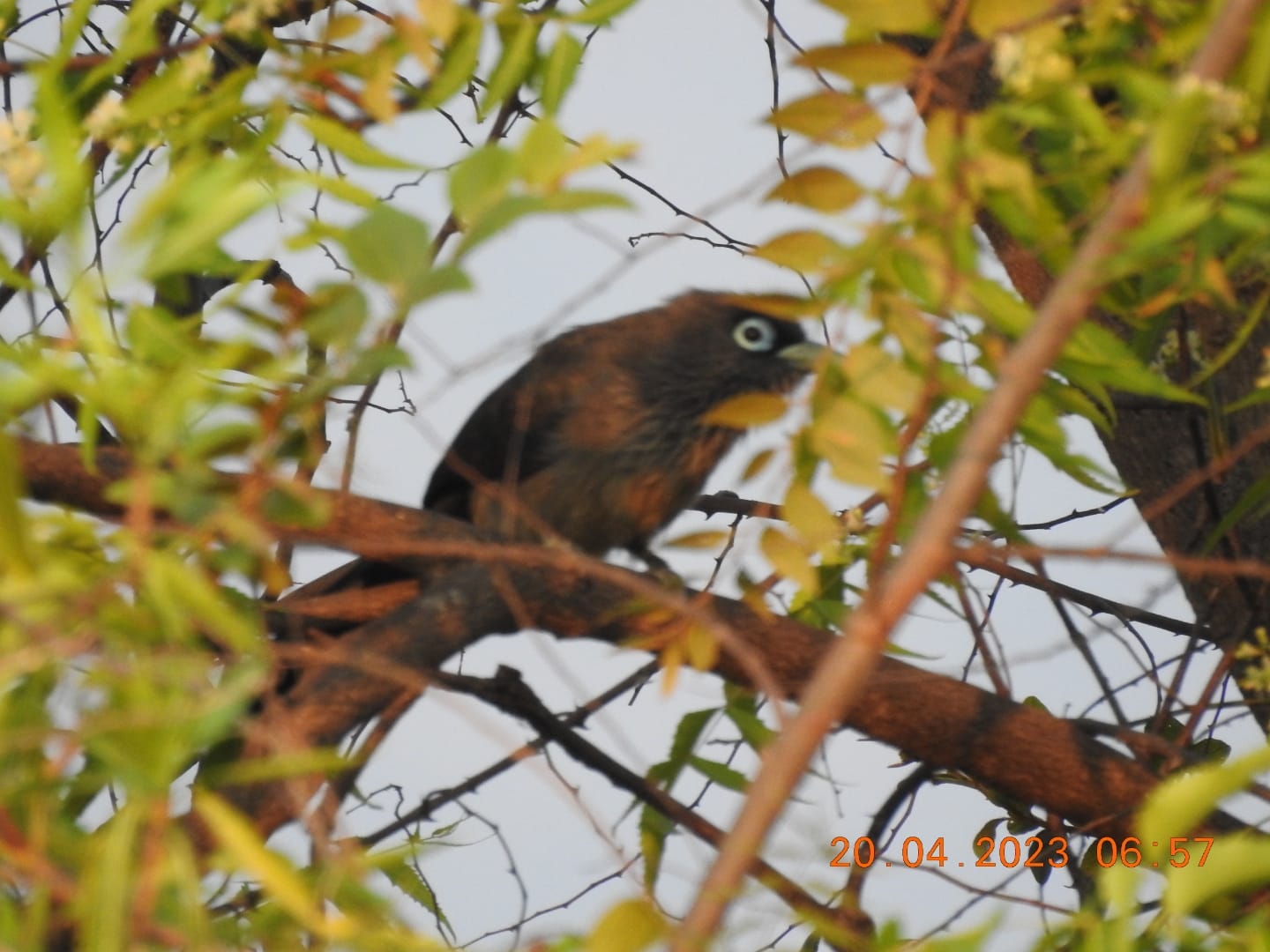
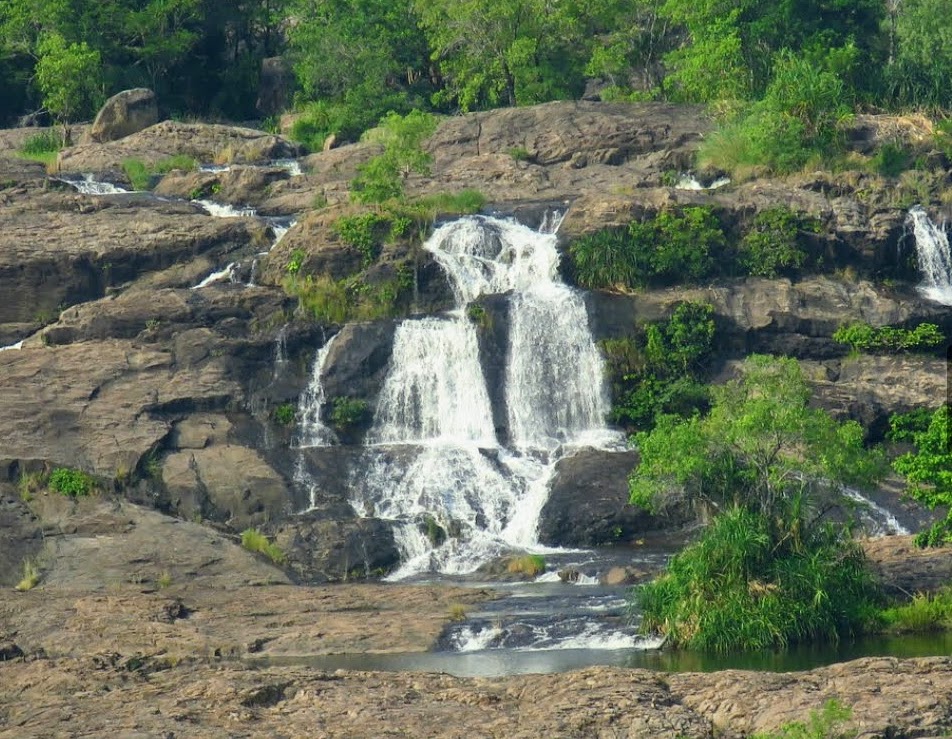
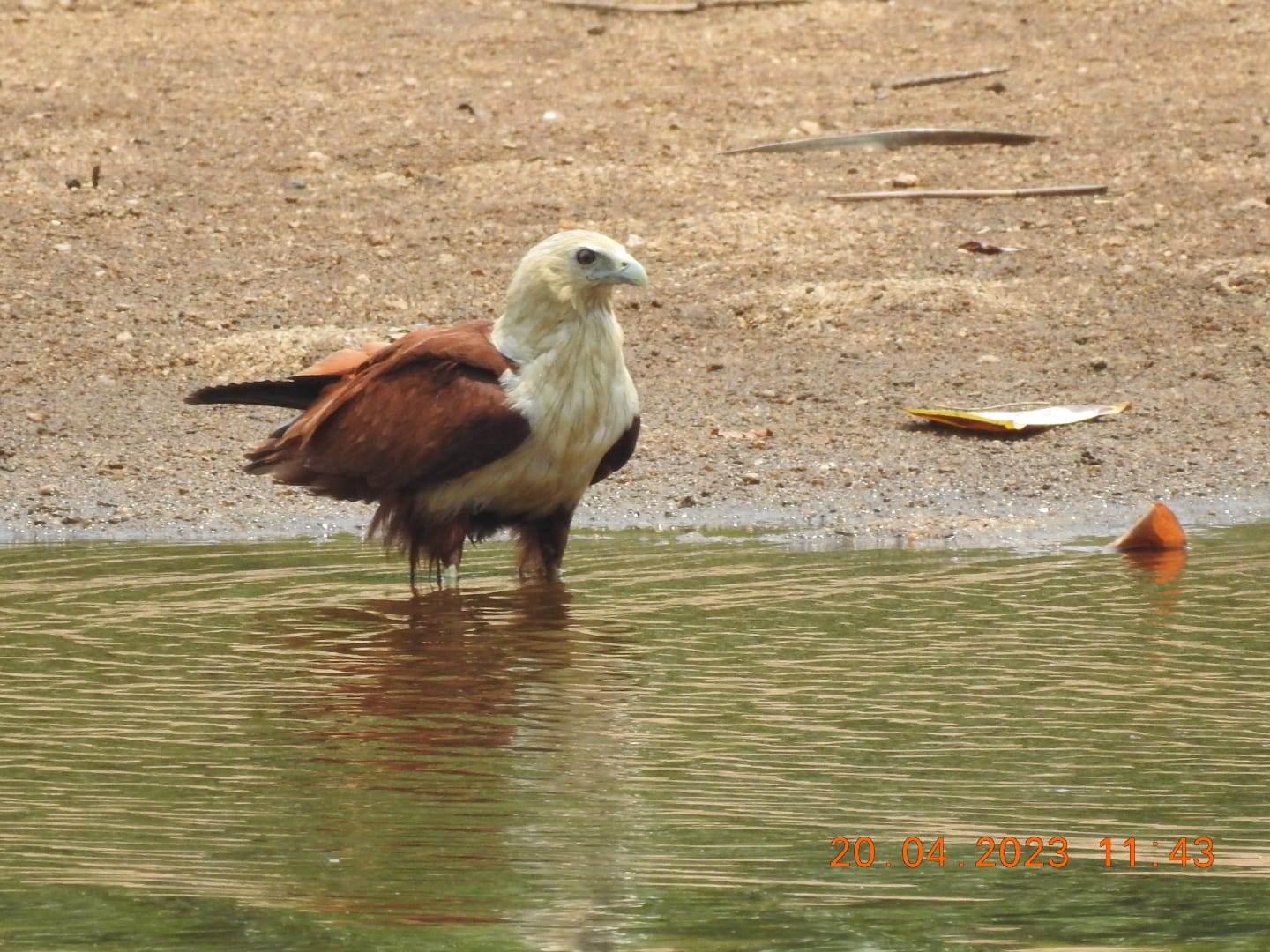
We then came back and thanked everyone who crafted a spectacular journey, extending their hospitality. After delightful lunch with payasam, we started packing for our return trip. With loads
of memories and authentic Tirunelveli halwa, we bid good-bye to the magnificent Thamirabarani landscape with high hopes of returning back. Below is a group photo of us in the campus.
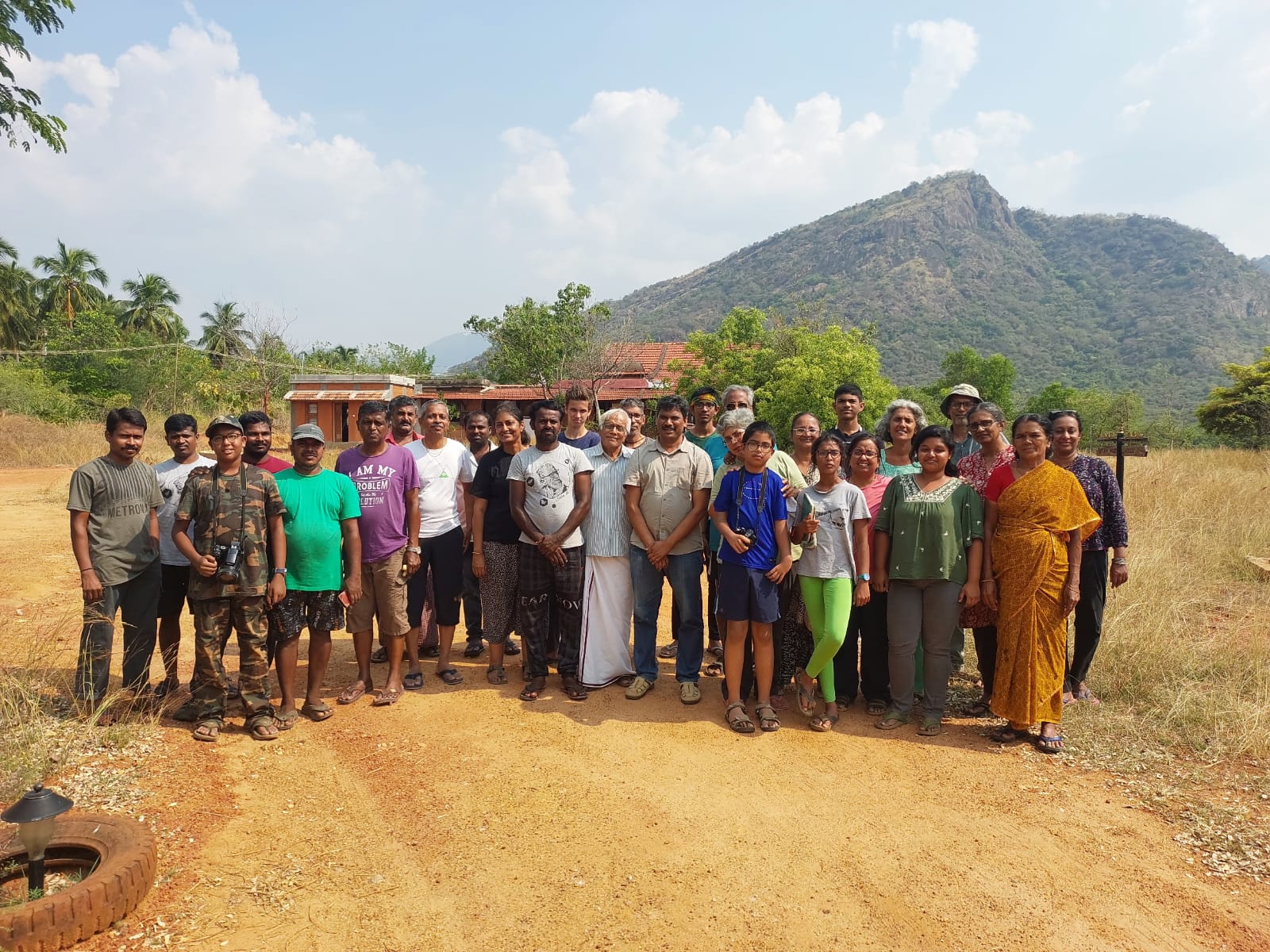
Thanks to all the members of the group for sharing the sightings list, pictures and offering a lovely company. Thanks to Sagarika for her valuable feedback during report making. Special thanks to Vijay sir for organising this awesome trip.
